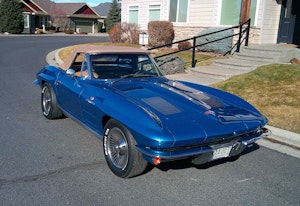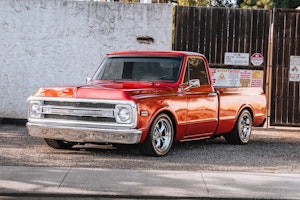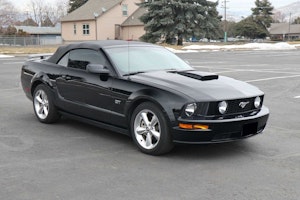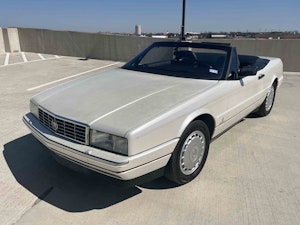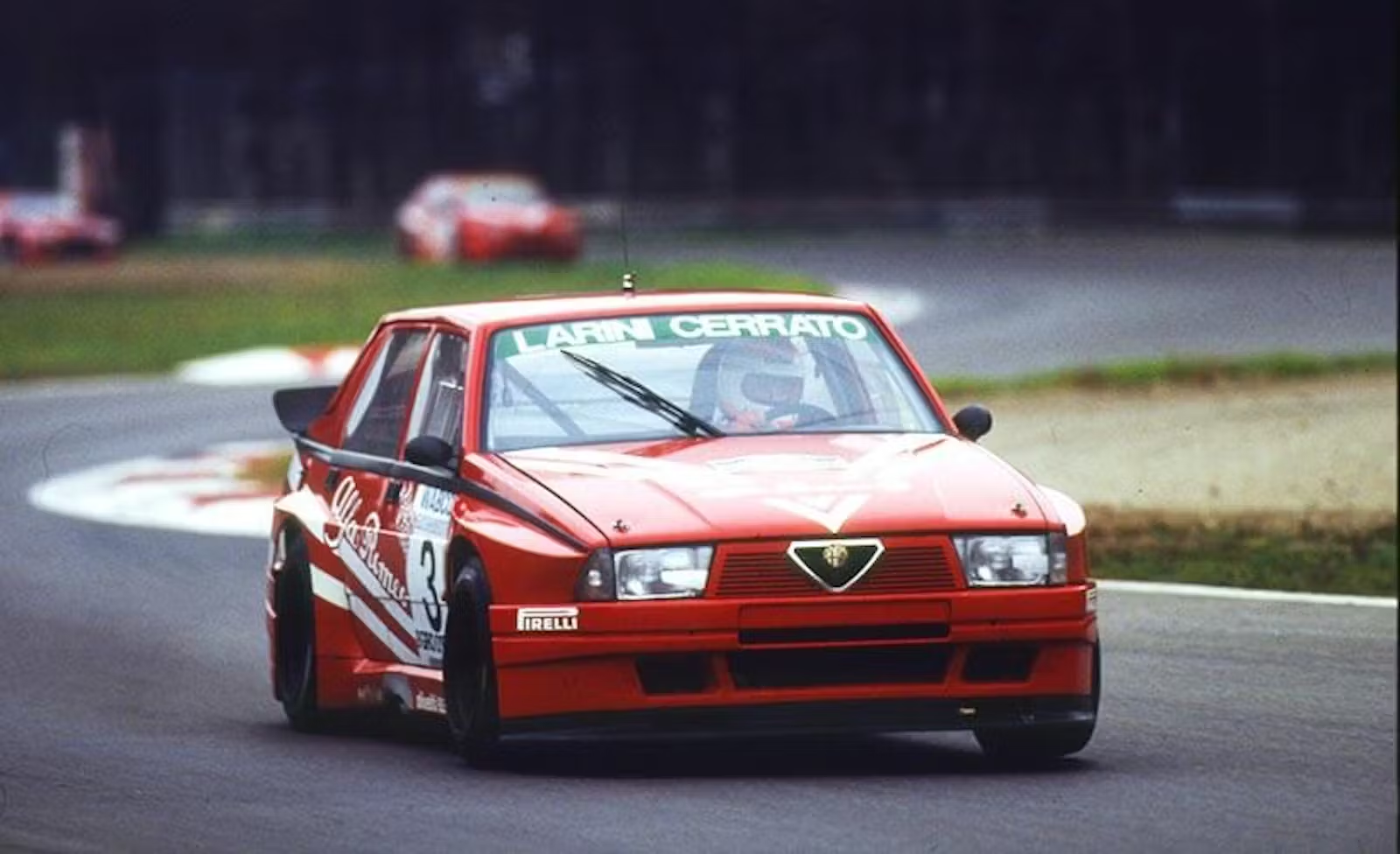Media | Articles
Decades before GM’s EV1, these postal Electruck Jeeps delivered the goods
General Motors’ EV1 is generally considered the first mass-produced battery electric vehicle of the modern era. GM made 1117 lease-only EV1s between 1996–1999 and, eventually, crushed most of them after they came off of their leases. More than 20 years before the EV1 came and went, though, plucky American Motors produced its own run of battery-electric vehicles (BEVs), with a fraction of the resources available to GM.
OK, so the DJ-5E postal Jeep, with its 40-mph top speed and 29-mile range, wasn’t nearly as practical of a daily driver as the EV1 was, but it was indeed battery-powered. AMC’s AM General division assembled 357 DJ-5Es in the mid-1970s, and the Jeeps were considered close enough to production-spec that the DOT issued a recall for unintended acceleration in 1975 (the DOT doesn’t issue recalls on experimental vehicles).
The DJ-5E’s stats aren’t all that impressive today, when you can buy electric vehicles that easily exceed 100 mph and boast ranges comparable to some combustion-powered cars and trucks; but in 1977 NASA tested the DJ-5E and considered it “state-of-the-art.” A 1982 Route Profile Analysis performed by the United States Postal Service returned a favorable verdict on the little electric truck. The electric Jeep wasn’t the first EV that AMC made, however.


In the 1960s, the government saw EVs as a possible solution to the air pollution caused by automotive emissions. A little-known 1966 law, the Electric Vehicle Development Act, as well as amendments to the 1963 Clean Air Act provided government funding for research into electric cars; in response, American automobile manufacturers started EV research programs. The Big Three had sufficient in-house resources to develop gadgets like advanced silver-zinc batteries and even hydrogen fuel cells, but the always-struggling AMC had to rely on outside help.
Marketplace
Buy and sell classics with confidence
That aid was initially provided by Gulton Industries. In 1963, hybrid-car pioneer Victor Wouk, who had done some consulting work creating an improved speed controller for the limited-production, electrified Renault Dauphines converted by Henney, sold his Electronic Energy Conversion Corporation to Gulton. Gulton had previously developed nickel-cadmium batteries for the U.S. Air Force, which were used to spool up jet engines, and was looking for additional markets. Wouk, who had an interest in reducing automotive pollution and improving air quality, suggested electric cars might be a promising segment.
Working alongside Gulton, AMC introduced the Amitron concept in 1967 that used both lithium-nickel-fluoride and nickel-cadmium battery packs, with the lithium cells providing cruising power and the nickel-cadmium packs providing better standing-start acceleration as well as regenerative braking capability. The latter also used the regenerated power to recharge the lithium-nickel-fluoride packs.
The Amitron was a tiny, three-passenger vehicle—a glorified, albeit high-tech, golf cart. For something more practical, Wouk and AMC came up what AMC head Roy Chapin Jr. dubbed the “Voltswagon,” a Rambler American station wagon whose 290-cubic-inch V-8 engine was replaced with an electric motor and 160 Gulton nickel-cadmium batteries, with a speed controller of Wouk’s design. (Some sources say it was a 1967 Rambler American wagon; other sources, that it was a 1969 model year car.)


While the electric Rambler was a success as a publicity stunt and did perform adequately, it also convinced Wouk that, with the state of late-’60s battery tech, hybrid power made more sense than batteries alone; batteries, he realized, did not have sufficient energy density to power a car on their own. Wouk left Gulton to start Petro-Electric Motors and build a rotary/electric hybrid Buick Skylark under the 1970 Federal Clean Car Incentive Program.
Following the 1973 oil crisis, concerns about conserving petroleum added to fears of air pollution, and further spurred EV development. In 1974, this time using Gould as a battery supplier, American Motors introduced the DJ-5E, which it branded the Electruck (apparently, the industry was scrounging for EV truck terminology long before Elon Musk). The Electruck was based on the two-wheel-drive DJ-5 postal delivery quarter-ton truck.
The DJ-5E had a 30-hp, compound-wound DC motor mounted amidships where the conventional DJ’s transmission was originally located. That freed space under the hood for batteries. The motor was connected via a stubby driveshaft directly to the short-ratio 5.89:1 rear end. Gould supplied the 54-volt, 27-cell battery pack, which had a capacity of 330 amp hours (17.8 kWh). Unlike AMC’s early experiments with electric cars, which used advanced battery chemistries, the Electruck’s batteries used conventional lead-acid chemistry. Gould additionally supplied the silicon-controlled, rectifier-based, and continuously-adjustable speed controller. This module also controlled forward or reverse, monitored the batteries’ charge, provided auxiliary power to the 12V accessories and lighting, and managed regenerative braking.

With 1305 pounds of batteries, a 263-pound electric motor, a 150-pound speed controller, and only 30 hp, the DJ-5E’s acceleration was less than sprightly. As the truck has a top speed of just 40 mph (some sources say 35), a traditional 0–60 run was out of the question but NASA measured the DJ-5E’s 0–32 mph time at a sedate 35.68 seconds. Remember, though, that many postal vehicles, particularly those used by urban and suburban post offices, spend their service lives at slow speeds on residential streets located close to those same post offices. When was the last time you saw a postal vehicle burning rubber? While a range of 29 miles (with 20-percent charge remaining) might not meet most Americans’ commuting needs, it potentially well within the distance postal vehicles travel in densely populated urban areas.
With its specialized needs met, the United States Postal Service took delivery of 352 DJ-5E trucks for real-world testing, while another five went north to Canada Post. The USPS DJ-5Es were in service from 1975–1983, when a post office study showed they actually cost about 50 percent more to operate than gasoline-powered postal Jeeps.

It’s not clear how many of the USPS Electrucks have survived. Surprisingly, though the Great White North’s severe winters don’t bode well for the survival of vintage vehicles, one of the Canada Post DJ-5Es not only survived but also received a complete, frame-off restoration.
That example has since come into the possession of a nice lady in Grove City, Ohio, who is a big fan of postal Jeeps. Though it’s only one of six DJ (for dispatch Jeep) vehicles that she has owned, the now-restored Electruck is her favorite.
All collections eventually get disposed of, one way or another. The owner has tried selling it a few times, but so far her asking price of $6500 has proved to be a bit steep—perhaps because the DJ-5E will need replacements for the nine 6V storage batteries substituted for the hard-to-source Gould cells. The owner says it ran when parked, but while in storage the batteries have died. The vehicle has just over 3000 miles on it since the restoration, which from the photos appears to have been done to a high level.
Come to think of it, you may have a hard time finding a nicer conventional DJ-5 than this electrified one. Considering how few surviving DJ-5Es are known, there very well may be fewer surviving DJ-5Es than extant EV1s, so, for a piece of EV history, $6500 might well be a bargain, even if the electric Jeep only has enough range for runs to the post office and the like.
